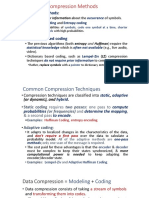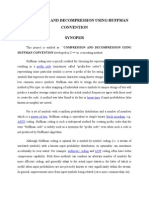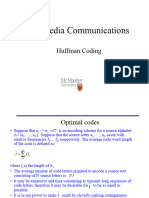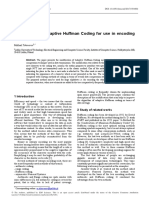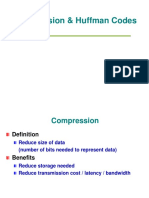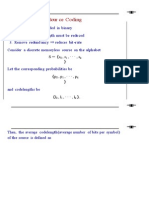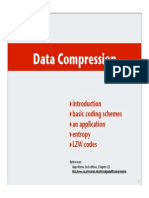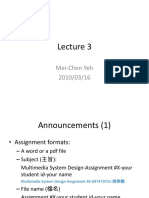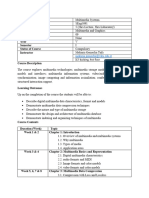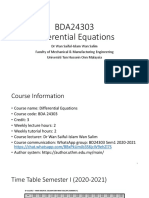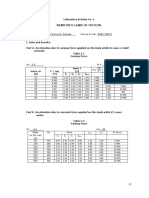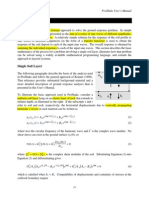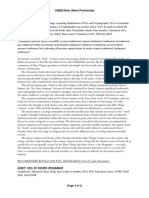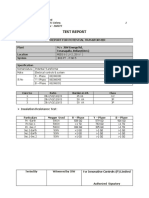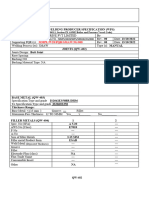0% found this document useful (0 votes)
93 views30 pagesChapter Three
This document discusses different data compression techniques including lossless and lossy compression, entropy coding, Huffman coding, adaptive coding, and dictionary-based coding (LZW). It provides details on each technique such as how Huffman coding builds a tree based on symbol frequencies to assign shorter codes to more common symbols. It also explains how adaptive coding dynamically updates codes as the probability distribution changes and how LZW replaces repeated strings with codes from an evolving dictionary to compress text.
Uploaded by
mekuriaCopyright
© © All Rights Reserved
We take content rights seriously. If you suspect this is your content, claim it here.
Available Formats
Download as PDF, TXT or read online on Scribd
0% found this document useful (0 votes)
93 views30 pagesChapter Three
This document discusses different data compression techniques including lossless and lossy compression, entropy coding, Huffman coding, adaptive coding, and dictionary-based coding (LZW). It provides details on each technique such as how Huffman coding builds a tree based on symbol frequencies to assign shorter codes to more common symbols. It also explains how adaptive coding dynamically updates codes as the probability distribution changes and how LZW replaces repeated strings with codes from an evolving dictionary to compress text.
Uploaded by
mekuriaCopyright
© © All Rights Reserved
We take content rights seriously. If you suspect this is your content, claim it here.
Available Formats
Download as PDF, TXT or read online on Scribd
/ 30




